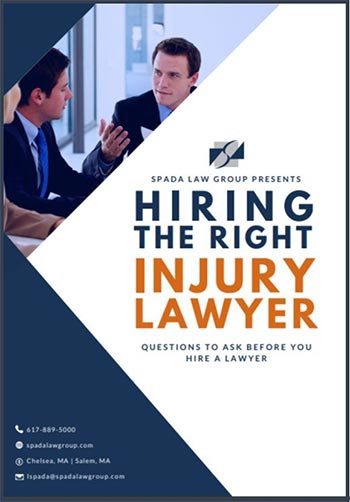
I've seen too many sad cases involving pedestrians in the last 12 months that I felt compelled to try to explain the laws in Massachusetts that relate to safe street crossings. My caseload this year has included a middle-aged man killed as he crossed a street, a corporate executive mother of 3 who suffered a horrific brain injury while walking back to her car, and a graduate student who had his right knee seriously injured as he made his way to campus. In each case, a life was either taken or seriously altered as a result of another car meets pedestrian collision. Hopefully, someone will read this blog, think twice before crossing a street and keep themselves safe as a result.
Facts and Figures
“In 2018, there were 78 reported pedestrian fatalities across Massachusetts. Males accounted for 59% of pedestrian fatalities, while pedestrians age 55 or older represented more than half the fatalities reported in 2018.
Research has found that motor vehicle crashes involving pedestrian fatalities occur more often between the hours of 3pm and midnight. From 2014-2018, 60% of pedestrian deaths took place during this time frame. In terms of time of year, the period from October through December consistently sees the highest fatalities. Nearly 40% of all pedestrian fatalities from 2014-2018 took place over these three months.
A variety of risk factors exist for pedestrians. Lack of sidewalks or crosswalks, traffic lights, and poor lighting can be factors in pedestrian injuries and fatalities involving motor vehicles. At the same time, pedestrians can reduce risks by utilizing crosswalks as much possible and refrain from walking on the shoulder of roads during non-daylight hours or darting out across the road at night when visibility is poorer for drivers. If walking at night, pedestrians should refrain from wearing dark clothes, so drivers can easily see them.”
Who Has the Right-of-Way Generally?
As a general rule (and I stress general) pedestrians have the right-of-way. Pedestrians however must yield that right-of-way to drivers under certain circumstances. The public often misunderstands the right-of-way principles and automatically assumes that the pedestrian always has the right-of-way and this misunderstanding has led to many injuries and death, almost all of them suffered by the pedestrian. We have all witnessed situations where pedestrians are crossing the street outside of a crosswalk or against a no walk signal. It’s a fact of life, but what does the law say?
Under Massachusetts law, a pedestrian who is crossing in a crosswalk, or at an intersection with either the walk signal or green light, has the right-of-way.
Massachusetts Gen. Laws Chapter 89 section 11 provides:
“When traffic control signals are not in place or not in operation the driver of a vehicle shall yield the right-of-way, slowing down or stopping if need be so to yield, to a pedestrian crossing the roadway within a crosswalk …if the pedestrian is on that half of the traveled part of the way on which the vehicle is traveling or if the pedestrian approaches from the opposite half of the travel part of the way to within 10 feet of that half of the traveled part of the way on which said vehicle is traveling…No driver of a vehicle shall pass any other vehicle which has stopped in a marked crosswalk to permit a pedestrian to cross, nor shall any such operator enter a marked crosswalk while a pedestrian is crossing or until there is sufficient space beyond the crosswalk to accommodate the vehicle he is operating, notwithstanding the traffic control signal may indicate that vehicles may proceed.”
Let's Dissect This Law Piece by Piece.
(1) Pedestrian Crossing in a Crosswalk Where No Lights are Present. If you are crossing a street in a crosswalk and there are no traffic control signals, cars approaching you from your left must stop to let you cross. If cars are approaching from your right and if you are within 10 feet of their lane of travel they too must stop.
(2) Pedestrian Crossing in a Crosswalk Where Light Signals are Present. So, what happens when a pedestrian gets to a crosswalk and has the option of pushing the signal button and waiting for the walk signal to turn green. Obviously, the pedestrian should push the signal and should wait for the walk signal to permit crossing, but that doesn't always happen. One of two things occur, either the pedestrian believes it to be safe to cross and enters the crosswalk when the walk signal is red, or it turns red in the middle of their crossing. In these situations, drivers must still stop for the pedestrian even when they're breaking the law. In fact, the statute states: “nor shall any such operator enter a marked crosswalk while a pedestrian is crossing …, notwithstanding the traffic control signal may indicate that vehicles may proceed.
(3) Pedestrian Crossing Outside of Crosswalk or No Crosswalk is Available. But what if someone is NOT in a crosswalk and gets hit? How does this fact affect a person’s right to seek compensation for their injuries? Who is at fault in this situation? These are questions we get from clients all the time. The answers differ based on the facts of each case, but I will attempt to simplify the analysis.
First, let me begin by quoting a Massachusetts Judge who presided over a case we tried several months ago as she was instructing the jury on the law in Massachusetts as it relates to this very issue:
“The rights and duties of a pedestrian and the operator of a motor vehicle in the use of public ways are reciprocal and each may rely to some extent on the other using proper care. Pedestrians have a duty to exercise due care in their use of public ways. Due care requires that the plaintiff exercise the care and caution which you would naturally expect from a reasonably prudent person under the same or similar circumstances. Further, a pedestrian has a right to cross a street while not in a crosswalk but must do so using due care.”
So, you see, just because someone crosses a street outside of a crosswalk does NOT automatically prevent them from successfully claiming and recovering their damages in a personal injury claim. The law requires a deeper examination into the circumstances of the accident for an answer to who was at fault and to what degree each party is responsible. Being outside of a crosswalk is simply one factor to consider.
Tips for Safely Crossing Massachusetts’ Streets
Based on common sense and my 22 years of representing people who have been hurt or killed in pedestrian accidents, the following are my best tips for staying safe crossing the streets of Boston and surrounding cities:
- Put your phone away! I see people stepping off curbs while still looking at their phones.
- Don’t just look left and right, make sure driver’s behind you and in front of you aren’t making a turn onto the street you are crossing.
- Use crosswalks where available. They heighten driver attention and give you a better chance of making a safe crossing.
- Make eye contact with a driver if they are close before you put yourself in front of their vehicle. Just because the driver may be stopped or moving very slowly doesn’t mean they are aware of your presence. If they don’t see you, they may accelerate before looking up.
- If a driver stops to let you cross, make sure there isn’t another vehicle approaching or passing the stopped car that could hit you.
- Never EVER walk in front of a truck stopped at a stoplight. Wait until the truck passes even if means waiting for a light cycle. Tall truck grills can obstruct a driver’s vision of pedestrians near its grill. If a light change to green while you are in front of the truck tragedy can occur. We’ve seen it happen.
- If you are a runner and you approach a street, stop running, and make safety your first concern. Too many runners don’t want to stop their legs from moving and that is a huge mistake. Again, I confess to making this mistake myself!
- Parking lots can be danger zones too! When shopping is aware of traffic in parking lots. Parking lots are one place where pedestrians and vehicles MUST co-exist. Be extra careful of cars backing out of parking spots.
Have You Been Injured in a Pedestrian Accident?
Pedestrian accidents are among the most serious cases we see. They almost always result in serious injuries or even death. The best thing you can do if you are injured in a pedestrian accident and want to be fairly compensated is to understand your legal rights before you make any decisions. Before you speak to an insurance company adjuster, sign or submit any paperwork or hire a lawyer, you owe it to yourself to get as much information as you can, so you can make a smart decision on what you need to do next. At Spada Law Group, we offer free consumer guides and videos that answer many of the questions car accident victims have. Take a look, download our free information or contact us for a free consultation. Learn what Spada Law Group is all about and how we might be the right personal injury lawyers for you.



